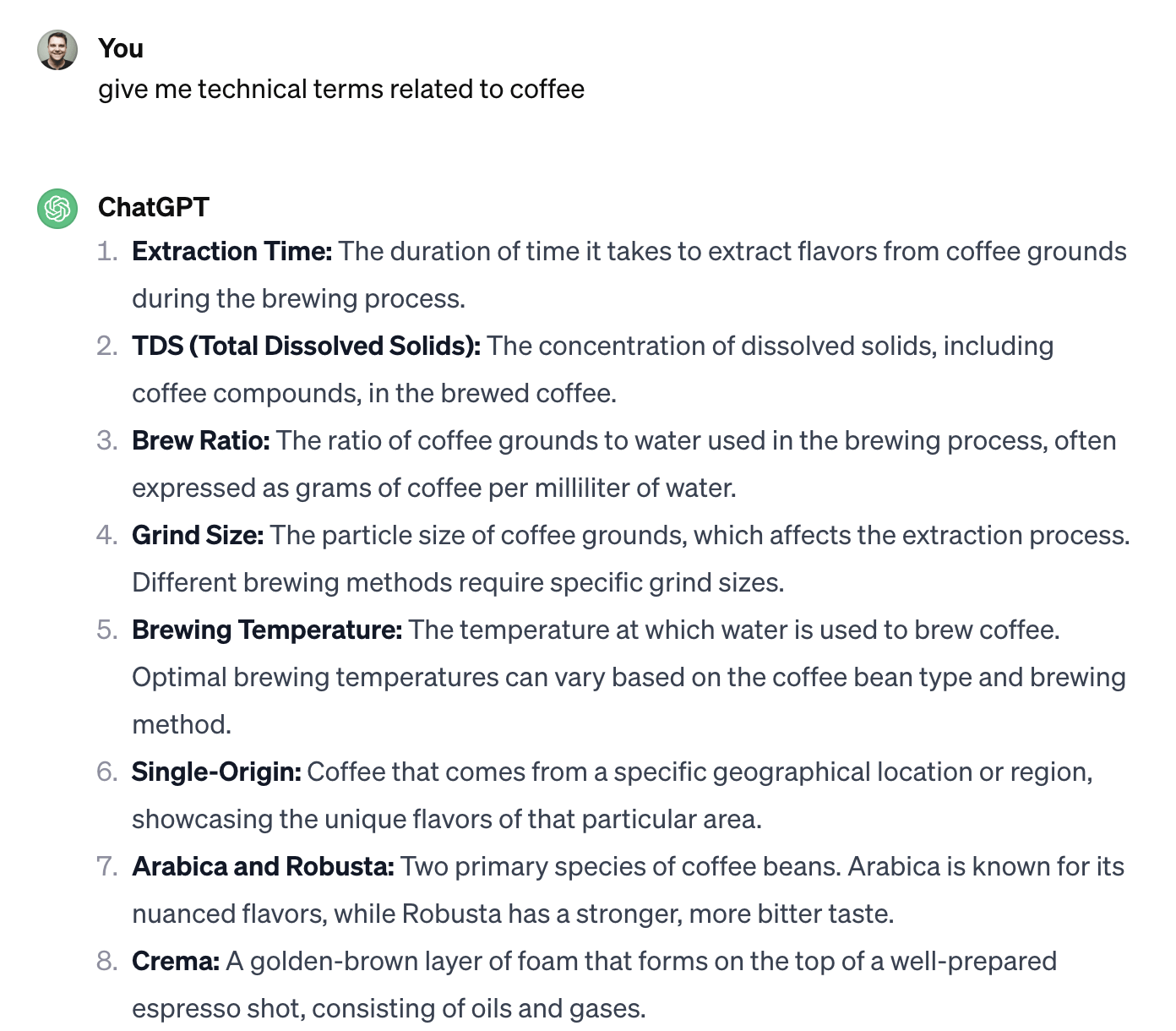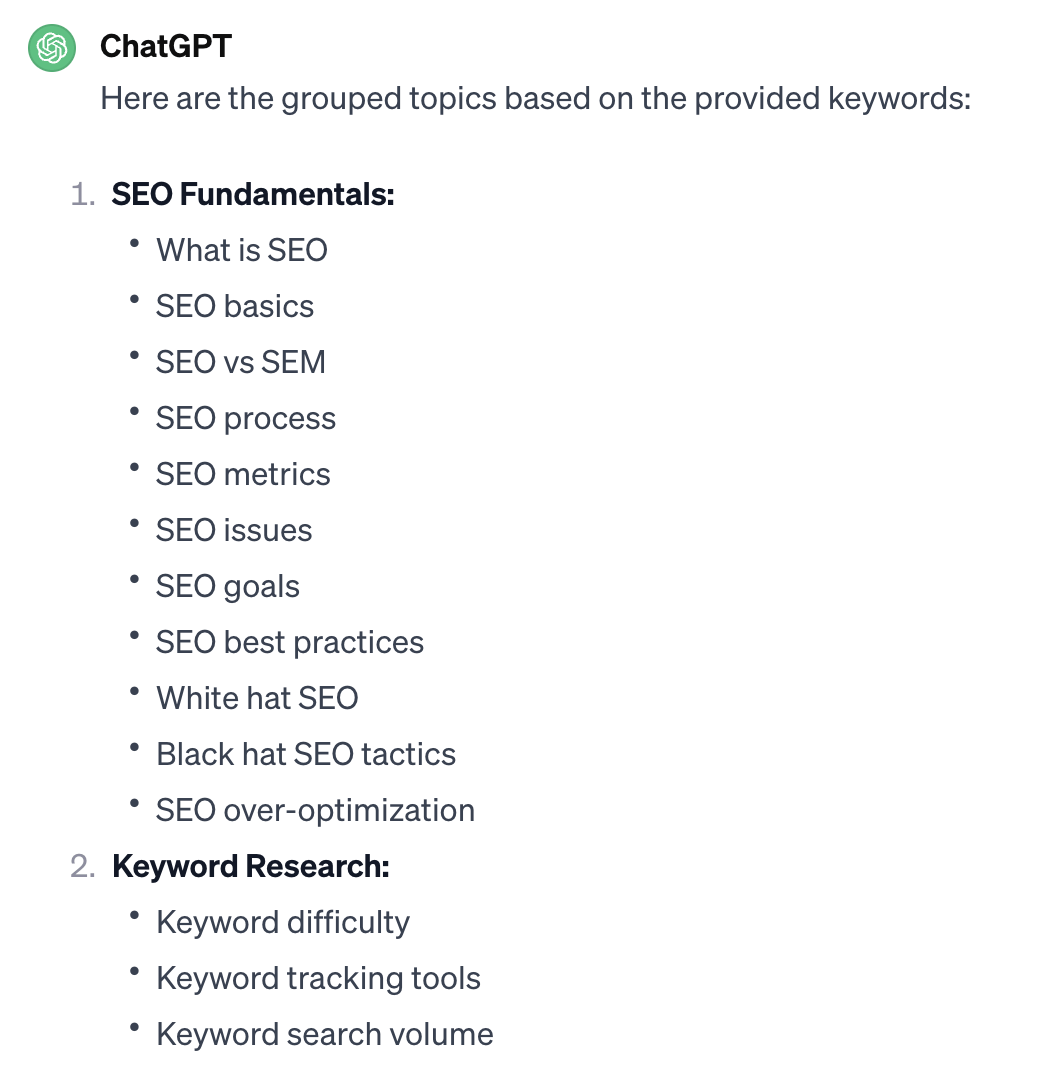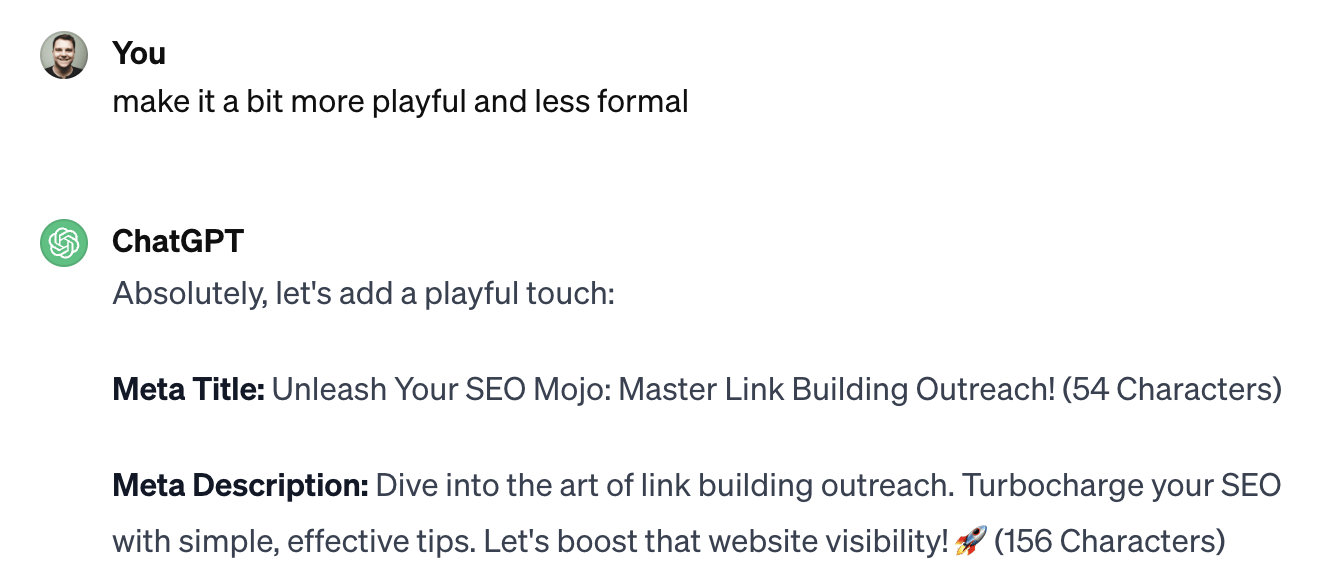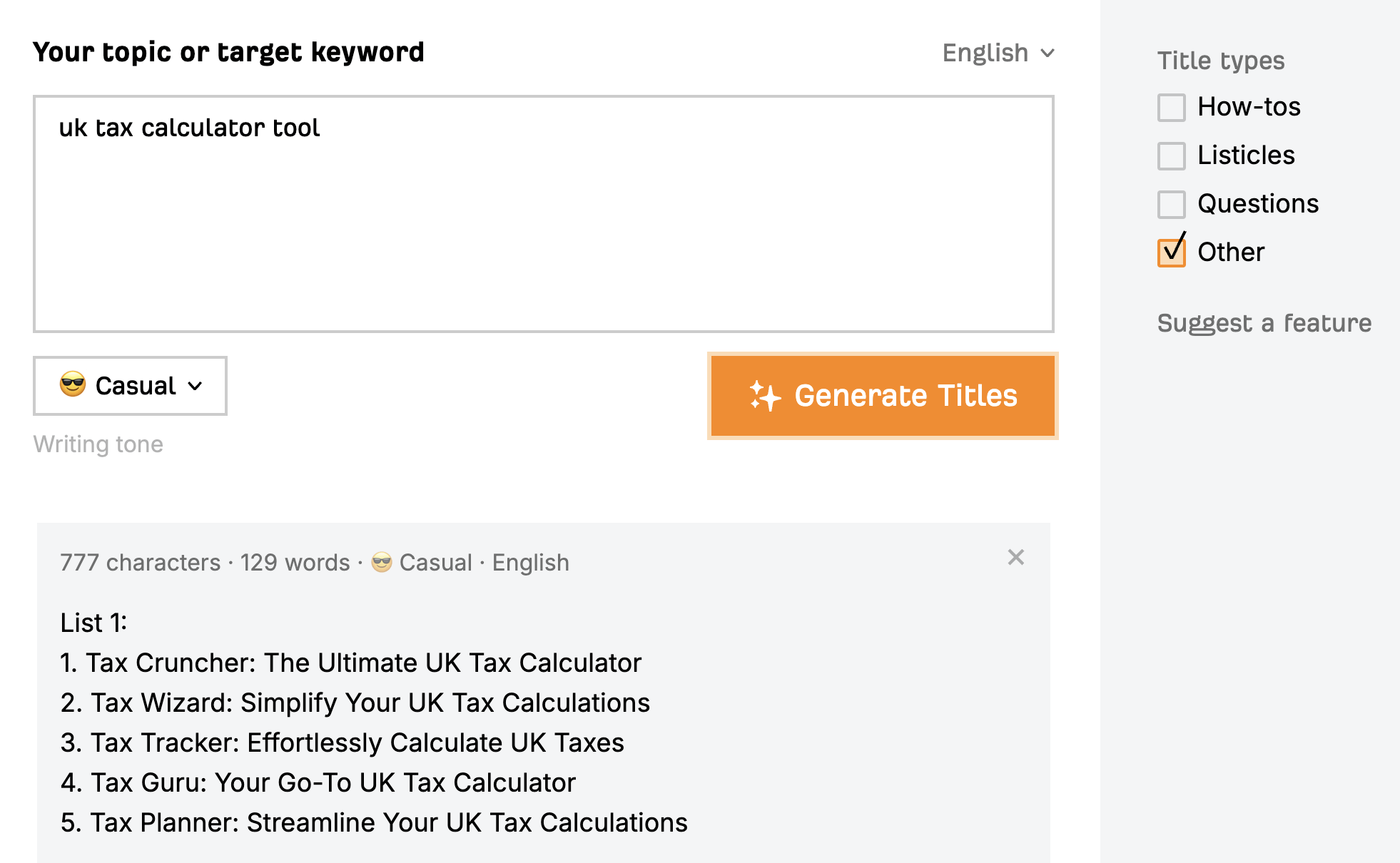SEO
ChatGPT for SEO? You’re Using It Wrong.

Everyone in SEO uses ChatGPT. But even after all these months, I still see many folks using it wrong.
Let’s explore three common mistakes and how you can fix them.
Believing everything ChatGPT says is never a good idea, but believing answers to questions it doesn’t have data to answer is a recipe for disaster.
For example, here’s me asking it for easy-to-rank-for long-tail keywords:
The results might look okay at first glance, but if you paste them into a keyword research tool like Ahrefs’ Keywords Explorer, you’ll see how bad they are. The search demand for all of them is so low that they’re not even in our database of 16.2 billion keywords:


Google Trends shows the same thing:


The reason for this is simple: ChatGPT just doesn’t have the data. It has no clue how often things get searched or whether a keyword is “long tail.”
Here’s another example of a question ChatGPT doesn’t have the data to answer:


Once again, we run into a similar problem. To classify intent, you need to actually search for the keyword and analyze the top-ranking pages and SERP features. ChatGPT can’t even browse the web (well, GPT 4 can, but it can’t browse Google results), so it simply cannot do this well.
How to fix this mistake
Keep in mind ChatGPT’s limitations and how it works. If you know it doesn’t have the data to answer a question well, either refrain from asking or give it the data it needs to provide a better answer.
For example, if you want it to classify search intent, you need to give it something to go on, like the titles of the top-ranking pages. Only then can it even attempt the task at hand.


Are you an Ahrefs user?
We’ve built a much more robust version of this idea into Keywords Explorer. Just click “Identify intents,” and AI will feed back the results.


Similarly, if you want ChatGPT to find content gaps, you need to feed it the content of both pages and ask it to identify gaps. Or, alternatively, run a content gap analysis in Ahrefs, export the keyword gaps, and ask it to summarize them.


ChatGPT rarely gives you exactly what you want on the first try.
For example, I recently asked for some technical coffee-related terms to use as seed keywords in Keywords Explorer.
Here’s what it gave me:


This isn’t a bad response, but having the descriptions there (which I didn’t ask for) was annoying because it made copying and pasting the list of terms difficult.
I faced a similar issue when I asked it to group keywords into broader categories, and it gave me a bulleted list.


I didn’t think much of this at first, but I soon realized I needed the results formatted as a table so I could paste them into a Google Sheet and filter them.
How to fix this mistake
Your first thought might be “prompt engineering” or buying some premium ChatGPT prompts.
While these things might help, you often still won’t get perfect results right away for one simple reason: ChatGPT prompts are like recipes. Even if they have a solid base, you still have to adjust them to your tastes.
For example, here’s a genuine premium prompt for writing a title and meta description:


And here’s the output:


It’s not bad, but it’s a bit dry for my liking. So, I followed up and asked ChatGPT to make it “a bit less formal and more playful.”


Definitely better, but a little too playful this time.
Let’s ask it to dial it down a bit.


Not bad.
In my experience, this iterative process is the key to getting good results from ChatGPT. Keep things simple to start, then refine as you go.
For example, I recently tried creating a UK tax calculator with ChatGPT. Instead of writing out insanely detailed instructions from the get-go, I started with a simple prompt: “create a uk tax calcalator in HTML, CSS, and JS”
Here’s the calculator it created:


Is it perfect? No. I wanted it to calculate the tax automatically based on UK bands rather than asking the user for their tax rate. But with just a few iterations, the problem was solved, and I had a pretty neat and accurate calculator.


Looking to use AI to write meta titles and descriptions?
Check out Ahrefs’ free title generator and meta description generator. Simply tell it what your page is about, pick a tone, and it’ll generate everything for you.


ChatGPT will happily put one word in front of the other if you ask it to write something, but the content will just be a mishmash of what’s already been said a million times. In other words, boring boilerplate content.
Case in point:


(Talk about dull…)
How to fix this mistake
Don’t just ask ChatGPT to “write an article.” Give it more guidance and use it to brainstorm ideas.
For example, say I’m writing a post on link building tips. Rather than asking it to write the whole article without guidance, I can start by asking for some outreach tips to get my creative juices flowing.


I don’t love any of these, but I think you could combine #1 and #4 for a unique tip: record and include a short video pitch in your email.
Now I have the idea, I can ask ChatGPT to expand on it and write it up:


Is this perfect? No. But it’s certainly not bad. In fact, if we cut some of the fluff and spend five minutes polishing the copy, it’s pretty decent:
X. Record Short Video Pitches
Personalized video messages add a human touch to your pitches, and you can create them effortlessly with a cheap webcam and free Loom account.
For example, say you’re running a broken link building campaign. Instead of sending a long-winded email explaining the issue, why not show them exactly what you mean? Fire up Loom and give them a visual rundown.
- Point out the broken link on their page.
- Show them exactly where it is and why it matters.
- Suggest a replacement link from your website and explain why it’s a great fit.
Here’s an example:
{insert video}
It might only be 1-2 minutes long, but it’s super helpful, and the personal touch can make a big difference in how your pitch is received.
ChatGPT is also great at helping you improve and optimize existing content. Again, you just need to give it the right direction…
For example, we recently found that we ranked #7 for “blogging tips” but didn’t own the featured snippet.


Sam theorized that, among other things, it might be because the top-ranking page’s subheadings clearly communicated what their tips were, while many of ours were vague:


He decided to have ChatGPT rewrite them for clarity:


Did it work? You’ll have to watch the video to find out, but honestly, it doesn’t matter. It’s obvious to me that the ChatGPT “optimized” ones are much clearer than what we had before, which means ChatGPT improved our content.
ChatGPT is also great at proofreading, simplifying unnecessarily lengthy sentences, and anything along those lines. You know, all the stuff that improves content quality and no doubt indirectly influences user signals.
Final thoughts
ChatGPT is insanely powerful and useful—but only if you understand how to use it.
If you’re hoping for it to write great content with no direction whatsoever, keep hoping. It can’t do that yet. But it can help with brainstorming, polishing human-written content, and many other SEO tasks. You just need to keep in mind its limitations.
Got questions? Give me a shout on Twitter X.

![How AEO Will Impact Your Business's Google Visibility in 2026 Why Your Small Business’s Google Visibility in 2026 Depends on AEO [Webinar]](https://articles.entireweb.com/wp-content/uploads/2026/01/How-AEO-Will-Impact-Your-Businesss-Google-Visibility-in-2026-400x240.png)
![How AEO Will Impact Your Business's Google Visibility in 2026 Why Your Small Business’s Google Visibility in 2026 Depends on AEO [Webinar]](https://articles.entireweb.com/wp-content/uploads/2026/01/How-AEO-Will-Impact-Your-Businesss-Google-Visibility-in-2026-80x80.png)















